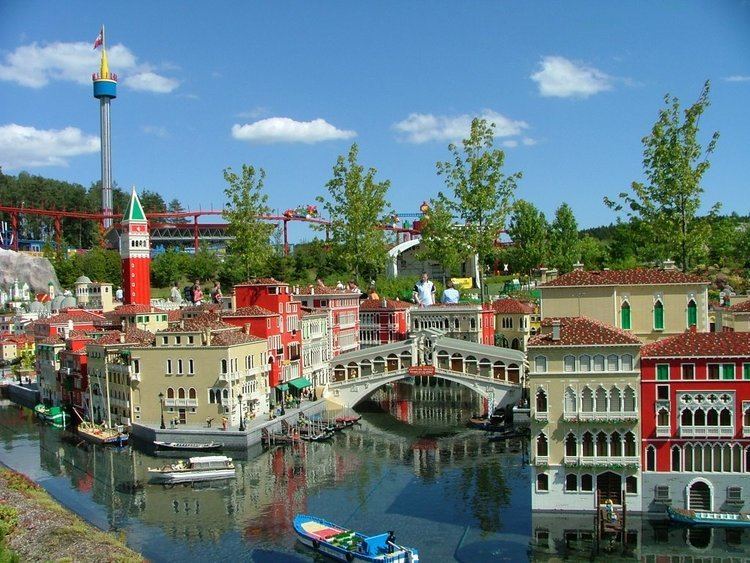Admin. region Schwaben Elevation 478 m (1,568 ft) Area 55.4 km² Local time Monday 1:43 AM Dialling code 08221 | District Günzburg Time zone CET/CEST (UTC+1/+2) Population 19,689 (31 Dec 2008) Postal code 89312 Administrative region Swabia | |
 | ||
Weather 1°C, Wind E at 11 km/h, 75% Humidity | ||
Günzburg is a Große Kreisstadt and capital of the district of Günzburg in Swabia, Bavaria. This district was constituted in 1972 by combining the city of Günzburg – which had not previously been assigned to a Kreis (district) – with the district of Günzburg and the district of Krumbach.
Contents
Map of G%C3%BCnzburg, Germany
Günzburg lies where the river Günz enters the Danube, and has a population of about 19,800.
History
Günzburg was founded in about 70 BC by the Romans to defend the borders of their land along the Danube; it was known as Castellum Guntia, Gontia or Contia. The name comes from that of the Celtic goddess Gontia. It consisted of a fort, later replaced by at least one other on the same site, a fairly large civilian settlement and most likely an important bridge over the Danube.
After the Romans left in the fifth century, the Alamanni tribe settled there. In around 700 the nearby castle of Ricinis was mentioned by the Cartographer of Ravenna as one of the five most important castles of Alemannia. In 1065 first documentary evidence appears of the town itself as Gunceburch.
In 1301 the town became part of the Habsburg house and was developed into the centre of the Margraviate of Burgau; for a time it was even the capital of all Further Austria.
Very near Günzburg is the site where the "Leipheim Horde" was defeated by the Swabian army in 1525 during the German Peasants' War. The same site saw the first flight by a Messerschmitt Me 262 in 1942.
On the ninth of October, 1805, elements of the Sixth Corps of Napoléon's Grande Armée assaulted Austrian positions in Günzburg. The first assault was initiated by the 25th Light Infantry and the 27th and 50th Infantry Regiments of the Line (under Pierre-Louis Binet de Marcognet), while the second consisted of only the 59th Infantry Regiment of the Line, under Mathieu de la Bassé - around one thousand Austrian prisoners were taken, and six guns captured. In 1806, through the Franco-Bavarian alliance, Günzburg was integrated into the Kingdom of Bavaria.
In April 1945, near the end of the Second World War, the city of Günzburg was bombed by the allies. Among other targets that were severely damaged or destroyed were the nearby town of Denzingen, the castle, and a munitions train that was in the train station.
Günzburg is the birthplace of Dr. Josef Mengele, medical officer at Auschwitz concentration camp.
Günzburg has flourished, boasting a thriving downtown shopping area, scenic views of the nearby historic castle, and one of the top five Legoland theme parks in Germany. It is also home of the soccer player Stefano Celozzi & Music Mogul Benjamin Enfield who moved to Günzburg in 2016
Main sights
The attractions of Günzburg include the Church of Our Lady (Frauenkirche) built by Dominikus Zimmermann, the margraves' castle (the only Habsburg castle built in Germany), the Reisensburg fort, today the congress centre of the University of Ulm and the nearly-intact old town centre.
In 2002 Legoland built a theme park near the town.
